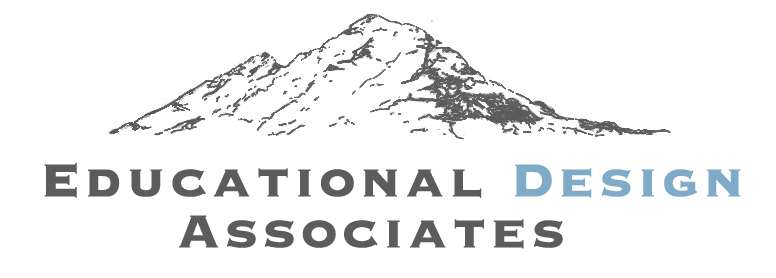Last week I went to the store for chocolate ice cream. Since there was a sale on a new brand, I decided to buy one carton of that brand, along with one of the brand I usually buy. The sale made them the exact same price.
The two tubs were the same size, shape, and style, made of nearly identical materials, though the packages were different colors. Plus, they were labeled as having the same flavor.
At the store, my concern was price and value. Since these were closely
comparable, I thought I would conduct an experiment to see which would taste better.
On the way home, I was concerned about the temperature of the ice cream, since I was traveling by foot, and had stopped to talk with a friend along the way.
 When I got home, I was concerned the absolute volume of the ice cream I’d bought, as I tried to fit the two cartons into my already-full freezer.
When I got home, I was concerned the absolute volume of the ice cream I’d bought, as I tried to fit the two cartons into my already-full freezer.
Hours later, when I got the two cartons out of the freezer, I was surprised to notice something I hadn’t considered previously: density. Clearly the two cartons, though identical in size and shape, had very different weights.
After an impromptu experiment in which everyone in the family hefted the two cartons to see which seemed heavier, we put them on our kitchen scale. Indeed, one of the outwardly-identical tubs weighed a full 85 grams (3 oz.) more than the other! Clearly, with two cartons of the same size at the same price, density factors into value.
Size. Shape. Style. Materials. Flavor. Color. Price. Taste. Temperature. Volume. Density. Value.
 I tell this story to help illuminate the language of design principles, which are at the core of my work. To be effective at change, such as making program improvements, creating a training sequence, or adding a new product line, an organization needs to step back and define the guiding design principles.
I tell this story to help illuminate the language of design principles, which are at the core of my work. To be effective at change, such as making program improvements, creating a training sequence, or adding a new product line, an organization needs to step back and define the guiding design principles.
Ice cream is simple. Most of what we do in the world involves a more subtle and complex set of design principles, which are much easier to overlook.
Design principles constitute the guide we use when we set out to create something. We operationalize goals by selecting the most vital design principles for a specific project, and intuitively we understand that effective design requires open-ended dialog and open-eyed consideration of options. Yet too often, we get stuck in assuming certain design principles are givens – if we acknowledge them at all. That makes it hard to know which are in effect as we plow ahead with a project, later to be surprised or frustrated when we can’t reach our goals.
 The structure of educational organizations is a perfect example of the disconnect between targets and outcomes. School boards invariably start out with noble goals like helping students to feel cared for and respected, to discover and develop a passion, to build a strong character, and to become lifelong learners. When leaders articulate such aims – and nearly every school and district I’ve encountered has similar goals – they often seek more funding or newer facilities to move them forward.
The structure of educational organizations is a perfect example of the disconnect between targets and outcomes. School boards invariably start out with noble goals like helping students to feel cared for and respected, to discover and develop a passion, to build a strong character, and to become lifelong learners. When leaders articulate such aims – and nearly every school and district I’ve encountered has similar goals – they often seek more funding or newer facilities to move them forward.
A design principle approach, in contrast, would start by looking at the actual nature of the students’ experience. What sort of relationship does the teacher have with the students? How are peer relationships formed and fostered? How is the school day spent, and what are the learning targets for the kids? What types of social and physical environments shape the experiences of the students in those environs? Finally, what data can guide our planning and help us help kids succeed – within the inevitable constraints of time and money?
The design thinking process is a structured, yet creative way to facilitate data driven rapid innovation. It feeds off a cycle of rapid testing of ideas and getting fast feedback from customers to test the validity of concepts. Through rapid testing of ideas, it’s easier to separate the good from the crazy from the crazy good. — Faisal Hoque

For students to feel cared about, a maximum class size of 15 might be needed. For students to discover passion, a significant part of the curriculum might need to be open-ended. And to build strong character, students might need to spend significant time outside the classroom to broaden their experience base. All of these conditions would likely contribute to greater academic achievement.
Sound like a typical school? Nope. Not in North America, anyway. Pre-existing assumptions about the systems they work in make it hard for school leaders to be open to nontraditional strategies. The design approach – without criticizing current practices – offers a way to think more strategically.
The context in which education takes place is a critical factor too. One idea that has become a hot topic in our social context is that of disruption. Disruption is a buzzword, but it reflects the fact that many cultural changes taking place – like unexpected election results (think November 2016), unanticipated shifts in market norms (think AirBNB or Uber), unprecedented technological changes (think self driving cars) – are forcing us to reshape our thinking.
 Given society-wide disruptions such as this, a design principle approach becomes a key adaptive strength for individuals and organizations. The design approach creates a clear, intentional path toward improved outcomes. It is dynamic in that it reflects a process rather than a tool. It is responsive in considering the full range of factors that shape an experience. It openly weighs alternative ideas, from a practical rather than ideological angle. Design thinking is a sure pathway toward more effective educational or organizational results.
Given society-wide disruptions such as this, a design principle approach becomes a key adaptive strength for individuals and organizations. The design approach creates a clear, intentional path toward improved outcomes. It is dynamic in that it reflects a process rather than a tool. It is responsive in considering the full range of factors that shape an experience. It openly weighs alternative ideas, from a practical rather than ideological angle. Design thinking is a sure pathway toward more effective educational or organizational results.
And it can help you find the best bowl of ice cream, too!

Nice job on this Daniel. The ice cream lead-in really had me curious about where you were going with this. I can imagine the walk too! Design and intentionality- definitely things that are a challenge in this fast-paced world. Makes me think about Thomas Friedman’s last book (Thanks for Being Late) about the pace in which we live and the outfall of time/event compression. Keep up the good work.